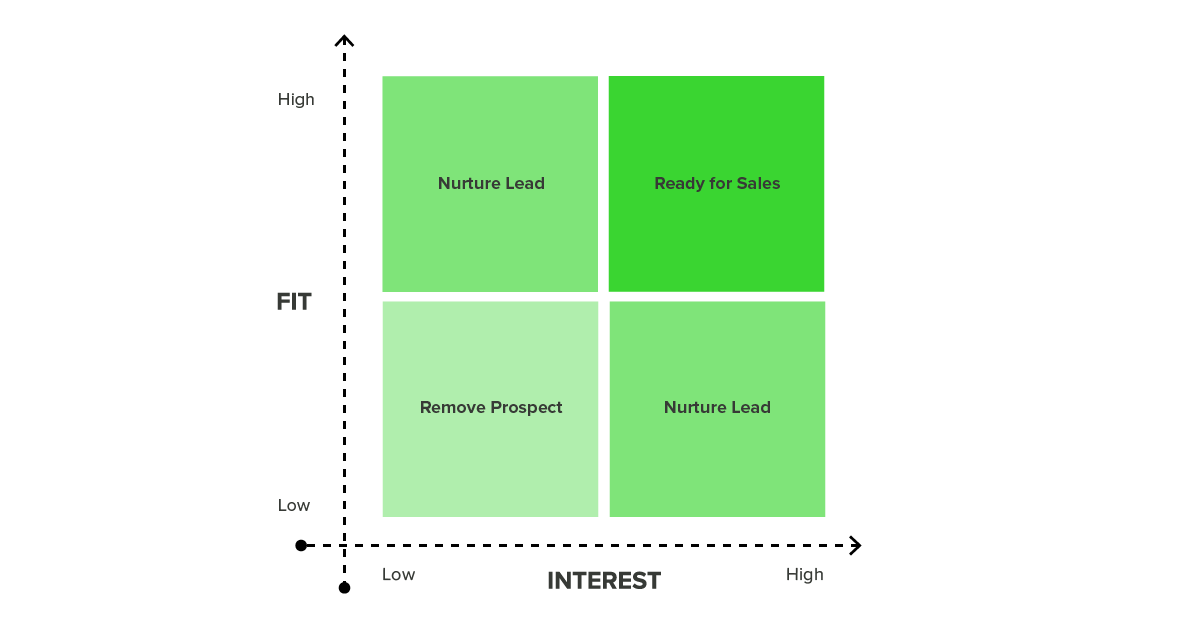
A successful email marketing strategy is the sum of its parts — different kinds of emails playing a role in nurturing your leads from visitors to closed-won.
While many emails will make up a cohesive email marketing strategy, many of them will largely fall into five categories: promotional, discovering fit, stimulating interest, re-engagement and SQL-to-opportunity nurture. By sending emails across these categories, you ensure that you don’t leave any opportunities behind.
Promotional Emails
While most of your emails may fall into scheduled campaigns and workflows, your promotional emails don’t. Instead, they’re used as an opportunity to be timely and promote a particular campaign or event.
“You can use time to your advantage to help promote things,” says Guido Bartolacci, Head of Demand Generation at New Breed. “It’s about getting your readers to take a specific action when you want them to.”
Promotional emails offer additional control over the content, subject line and timing of an email in that no action is required by the user to receive them; they can be used to drive any action at any time based on the sender’s discretion.
At New Breed, we use these emails to promote our upcoming webinars. A perfect example is our last-chance registration reminder that goes out two hours before the webinar begins. This gives us ultimate control over the email and allows us to include the fact that the webinar is just two hours away in the subject line in an effort to drive urgency.
Discovering Fit

The fit and interest matrix is used for scoring leads and determining which prospects are worth pursuing. A necessary part of any email marketing strategy is the emails you send to learn more about contacts.
First conversions are generally weak — you may not get a company email or the necessary details you need to accurately segment the prospect. The objective of these emails is to identify whether the prospect is a good fit for your product or solution.
The most important detail you know at this point is what a prospect downloaded to convert on your website. A discovering fit email sends them similar content to further nurture them. In doing so, you’re driving these prospects to download additional gated content and provide you with more detailed information so you can determine their fit.
Download our Email Best Practices Checklist to increase your email conversion rates
“If you’re using a ToFu, MoFu, BoFu model as we do, your content should be aligned with these stages to continue to learn more about the prospect as you go down the funnel,” says Guido.
When utilizing these emails, it’s also important to modify your form strategy to support them. As prospects move into the middle and bottom of the funnel, conversion opportunities should require business emails.
By collecting the right information on these prospects and qualifying them for sales, your team is better prepared to address their pain points and challenges further along in the process.
“It’s important to identify fit and use these emails so by the time the sales conversation comes around, you’re ready,” says Guido.
Stimulating Interest
Just because you have determined a prospect is a good fit doesn’t mean they’re ready to make a purchase. Stimulating interest emails come in when you know a prospect is a good fit and now it’s time to convince them that you’re the right solution for their challenges.
At this point, there is little reason to gate content in these emails. Instead, your objective to stimulate interest and build trust between your business and your prospects. Having learned enough about them, the content you’re sending in these nurture emails should align with their needs and pain points, positioning your product as a potential solution.
“Stimulating interest emails should put prospects in a position where they want to talk to you,” says Guido. “They’re raising their hand and saying they want to talk to sales.”
When making the transition from identifying fit to stimulating interest, you should ensure that your emails align with your existing sales timeline. For example, if you have a shorter turnaround, then these emails should transition fairly quickly.
Re-engagement
While sending fit and interest emails, prospects may stop engaging with your content. In this case, a successful email strategy must include re-engagement emails.
“Your prospects may not be in a position to buy after their first touch,” says Guido. “You have to have a method of pulling them back into the process, and that’s where re-engagement emails come in.”
Prospects that are no longer engaging in your marketing need something new. Re-engagement emails deliver content that stands out from what you have already sent. These emails can fall into fit or interest nurture campaigns. The existing content track they’re on may not be aligned with their goals or pain points, so a re-engagement email can give them the opportunity to engage with a different subject matter.
“Don’t just send them more of the same content,” says Guido. “You have to send them something new that can capture their attention.”
There are many ways to implement re-engagement methods into your email marketing strategy including new offers or directly calling out that they haven’t engaged with your content to spark some interest. Alternatively, promotional emails can play the role of a re-engagement email because they offer a different subject on a short timeline to prompt action from a lead gone cold.
SQL to Opportunity Nurture
Assuming a prospect is a good fit and they have remained engaged or re-engaged with your stimulating interest nurtures, eventually your sales team will enter the process. As this happens, your email marketing strategy should continue to support the nurture of sales qualified leads to opportunities or closed-won business.
“At this point, it’s important that marketing isn’t stepping on the toes of sales, but rather supporting what sales is already doing,” says Guido.
Your previous nurture emails have provided the foundation of education, so you no longer need to educate the customer. Instead, these emails continue to build upon the trust you’ve initiated and demonstrate the value your business can provide. The content associated with these emails generally consists of case studies, testimonials and reports that support your value proposition.
“The objective of these emails is to portray your salesperson as a hero that can help save your prospect’s business,” says Guido.
Takeaways
A successful email marketing strategy doesn’t just implement one of these emails on its own. These emails support one another in determining fit, nurturing prospects, keeping them engaged and eventually converting them into customers.
Whether it be prospects who stopped engaging or ones you never knew enough about to qualify, if your strategy doesn’t include one of these emails, you will ultimately miss out on opportunities.
Chris Singlemann
Chris is a Brand Marketer at New Breed where he is responsible for crafting design and video assets that support our brand. When he's not behind the camera, he enjoys kayaking and tending to his sourdough starter.

